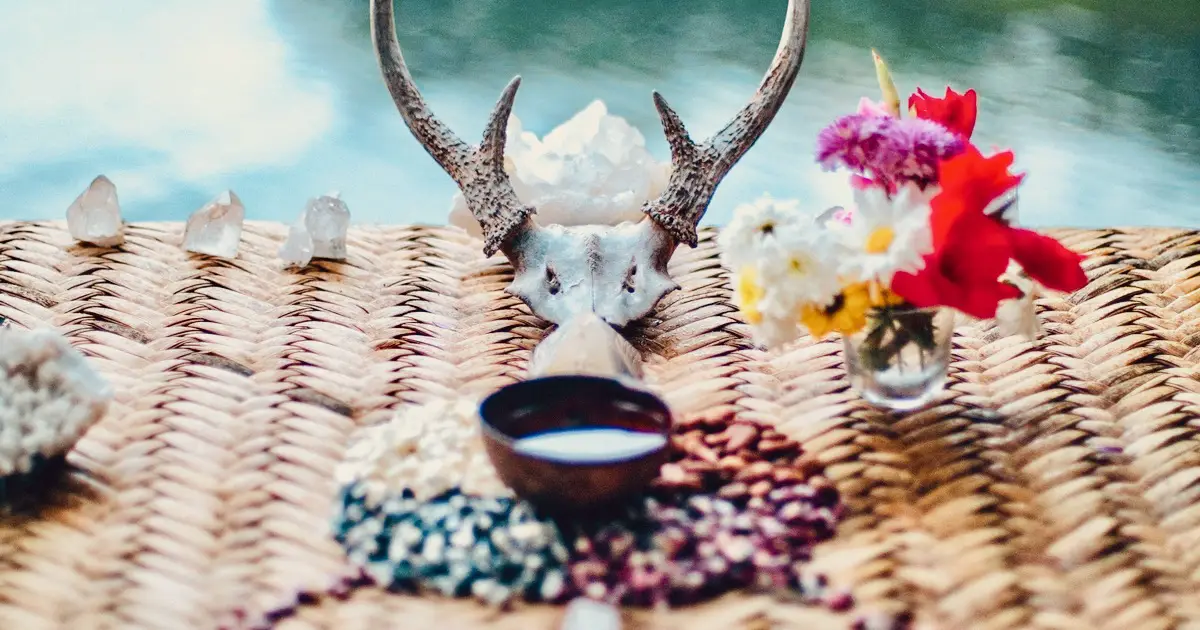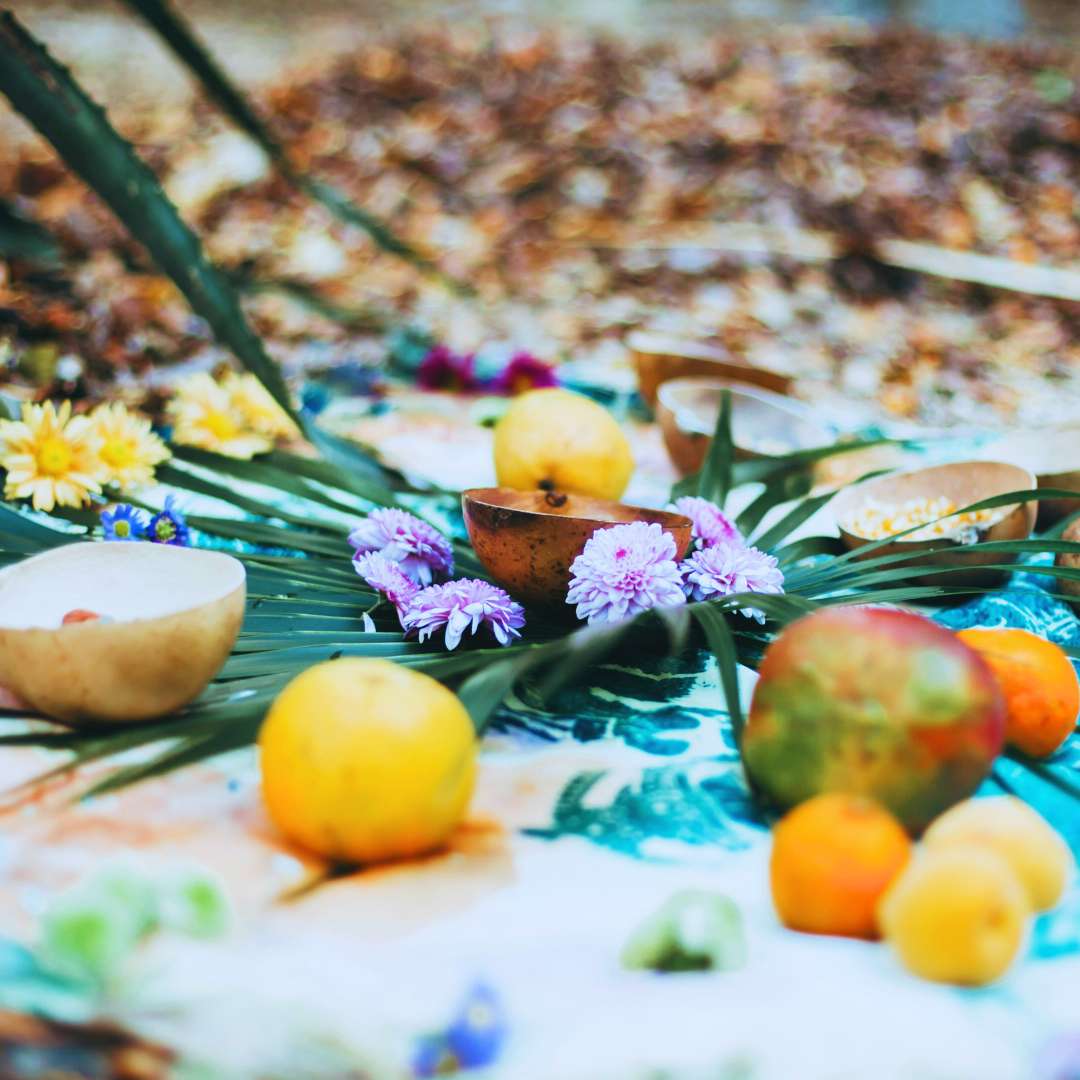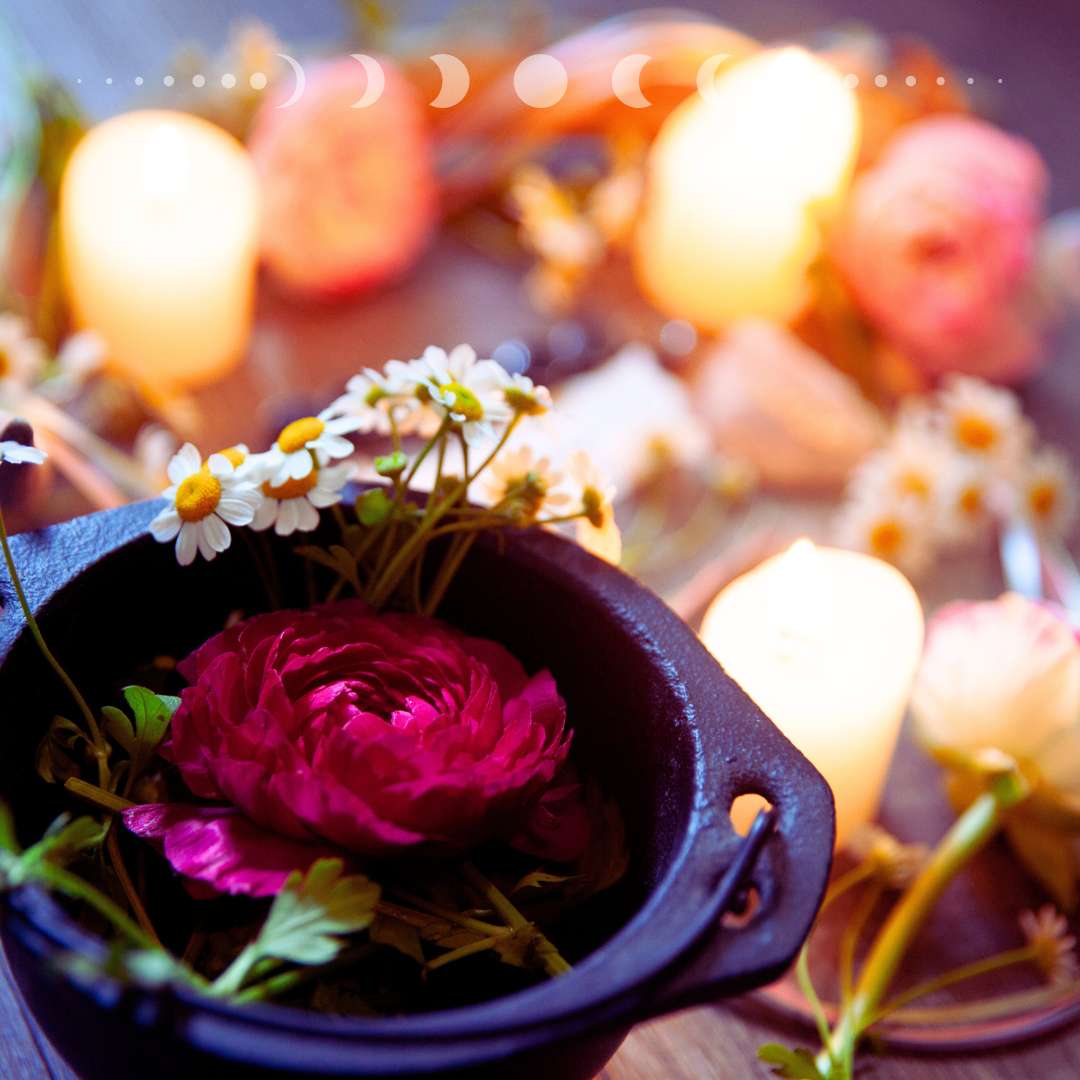Setting up an altar is a deeply personal spiritual practice that can help you connect with specific deities, ancestors, spirit guides, and your own divine self, to set intentions, receive guidance and find peace.
In this article, I’m sharing some of my personal practices including tips and ideas on how to build altars that reflects your unique personality, preferences, beliefs, and intentions. Please use it as a starting point, a few shots of inspiration from my heart to yours…
1. Decide the intention for your altar
Crafting your intention is an important first step in setting up your altar. Your intention is the purpose or goal that you want to focus on, during your spiritual practice. It could be anything from healing to abundance to love. Whatever intention you decide on, make sure it’s clear and specific.
Do you need more peace, healing and love, or are you simply looking to explore your spiritual side? Do you want an altar dedicated to a specific God, Goddess or spirit guide? Or is it going to be a special space for prayer or meditation?
When I was using altars to connect with my Spirit allies, I set intentions with crystal clarity before moving on to the next steps, so I knew exactly what objects those allies would appreciate.
2. Choose the right location
There is no hard and fast rule when it comes to locating altars. But try to ensure your space is quiet, peaceful and undisturbed. It should be easily accessible and comfortable enough for you to sit or stand with for a few minutes without feeling cramped.
Instagram and Pinterest have SO many beautiful altars to swoon over, but remember, the key is to create an area that feels sacred to you, and fits into your world. Here are some ideas for home altar locations –
- Quiet corner of a room
- Small wooden stool
- Shelf
- Small table or end table,
- Small stool or chair
- Mantlepiece
- Upturned box
- Big smooth stone
- Stack of books
When choosing the right location for your home altar, it is important to consider natural light and the four directions. You may want your altar to face east, where the sun rises, as this will bring in new beginnings and positive energy, supporting intentions for growth and change. Alternatively, facing your altar north is a good choice, as this sacred direction is associated with stability and wisdom.
Feel into the energy of the space you’ve chosen – how accessible it is, the flow of air, the natural light, and how much clutter is lying around. You might even want to check whether Moonlight will fall upon it. Once you’ve decided, give the space a good clean.
3. Select meaningful objects
Gather materials, objects and symbols that are meaningful to you, and align with the purpose of your altar. These could be things like crystals, objects from nature, statues, or images of deities. You could add visual representations of your intention, or items that represent aspects of your life you want to focus on, such as a symbol of abundance, divine feminine energy or a photo of a loved one.
You could also incorporate items such as a family heirloom, a piece of jewellery, or special items from faraway places. Tarot cards and oracle cards are popular with many witches, as are photographs and sigils, affirmations or written prayers.
As I began my journey with altars, I realized how overwhelming it can be! So a good structure to follow when building your altar space is to incorporate the main 5 elements that are usually placed on altars:
- Earth: Crystals, stones, soil, black salt, fresh fruit or flowers, to represent stability and grounding
- Air: Feathers, images of birds, and incense, to represent intellect and communication
- Fire: Candles or a fire lit hearth, to represent transformation and passion
- Water: A bowl of water, seashells, or a chalice, to represent emotions and intuition
- Spirit: Often symbolized by a central altarpiece, anointing oil, or a representation of deity,signifying the divine and the interconnectedness of all things.
4. Arrange your objects
After much trial and error, I’ve concluded that intuition is the best thing to use when designing your altar.
It’s normal to have one focal point. This could be a visual reminder of the purpose of your altar, something to represent a deity you’re working with, or something with big spiritual significance. Alternatively, if you have a beautiful big piece of rose quartz that’s just calling out for to you, then place that in the center! How you arrange your other sacred objects is up to you.
Realise also, that mystical items have their own consciousness and will likely tell you where they want to be placed (yes, seriously!) so listen to the whispers of your intuition and let the objects themselves guide you.
5. Consecrate, bless and awaken
Once the altar is carefully assembled with the chosen elements, it needs to be consecrated, blessed, and awakened, in order to have power. I’ve found this part of the process is absolutlely essential, though it’s a practice many people are unaware of, or don’t think is that important.
To begin with, burn herbs or incense to cleanse and purify your altar space. Palo Santo and white sage are popular choices, but you must make sure it is ethically sourced. Alternatively, use local herbs such as mugwort or cedar.
Next, sit for a moment and offer a heartfelt blessing. Invite your spirit guides and any divine presence to infuse the space with love and protection.
Finally, awaken your altar and raise the spiritual energy! A wonderful way to do this is by drumming or rattling over it, or singing a prayer of devotion.
You may also like to spend some time in quiet meditation, connecting with the spiritual essence of your altar, and feeling into the space you’ve created – it’s like a new friend! You want to get to know it.
6 Maintain and update
Once you have set up your altar, it is vital to maintain it regularly, to ensure it continues to serve its purpose. Here are some tips on how to maintain your altar:
Daily Cleansing
Just like any other spiritual practice, daily cleansing of altars is important, to clear away any stagnant energy and lingering negativity.
On a practical note, keep your altar tidy by cleaning up any spent candles, ash and remnants of ritual work. It’s important to remove or replenish any fruit or flowers, and if you leave offerings on your altar, ensure they’re removed before going bad.
I like to start my day by lighting a candle and some incense and allowing the smoke to waft through my altar space, whilst saying a short prayer for peace and positivity. Think about the kind of daily practice that would fit into your life, and how tending to your altar could support your sacred work.
Regular Recharging
It is good practice to recharge your altar with positive energy. You can do this with sound – by drumming, rattling or singing over it, by placing crystals or plants on your altar or burning essential oils.
If you’re using your altar for magic or ritual, it will likely become charged up with your practice, but it’s also important to “give back” by offering
Protection
I like to keep a small bowl of salt on my altar to absorb any negative energy. Black salt can be used for protection and grounding, which is especially important if you use your altar for magic, ritual and spellwork
Updating your altar for the seasons
Updating your altar to reflect the changing seasons is a great practice, both for harmonizing with the prevailing energies, and keeping your altar refreshed.
During the winter months, you may want to add more candles or warmer colours to your altar to create a cozy atmosphere. I love to add bones and snake skins, and things that represent the seasons of death, and the Dark Goddess.
In Spring you may want to use your altar to celebrate and amplify the good energy rising in the natural world. Place elements such as decorated eggs, honey, bulbs, seeds, and representations of the maiden Goddess on your altar.
Build a Beltane altar for abundance.
I sometimes make a small altar devoted to the Goddess at this time, and I love making the space for intention setting when the warmer seasons arrive.
Using your altar for spiritual practices and rituals
There are SO many ways to incorporate your altar into your spiritual practice. Whether meditation, prayer, spellwork, or simply taking a little space and time out of your daily life for quiet reflection, the altar serves as a tangible focal point for connecting with the sacred.
When doing my spiritual practice, I often find that my altar provides a sense of grounding and focus, helping to focus my energy and thoughts. It becomes a sacred space where I find strength, spiritual power, and connection to the divine.
Working with your altar is a personal practice – maybe you’ll use your altar to cultivate gratitude, seek guidance, or set intentions for the future. Maybe you’ll find yourself sitting with your altar to honor traditions, mark significant life events, or track the phases of the Moon?
For many people, their altar becomes a place where the spiritual and the mundane intersect, offering a space for personal growth, healing, and sacred spiritual connection.
Remember, there is no right or wrong way to create an altar, and there are no hard and fast rules when it comes to maintaining it. It is important to listen to your intuition and do what feels right for you, your own altar, and your daily spiritual practice.





